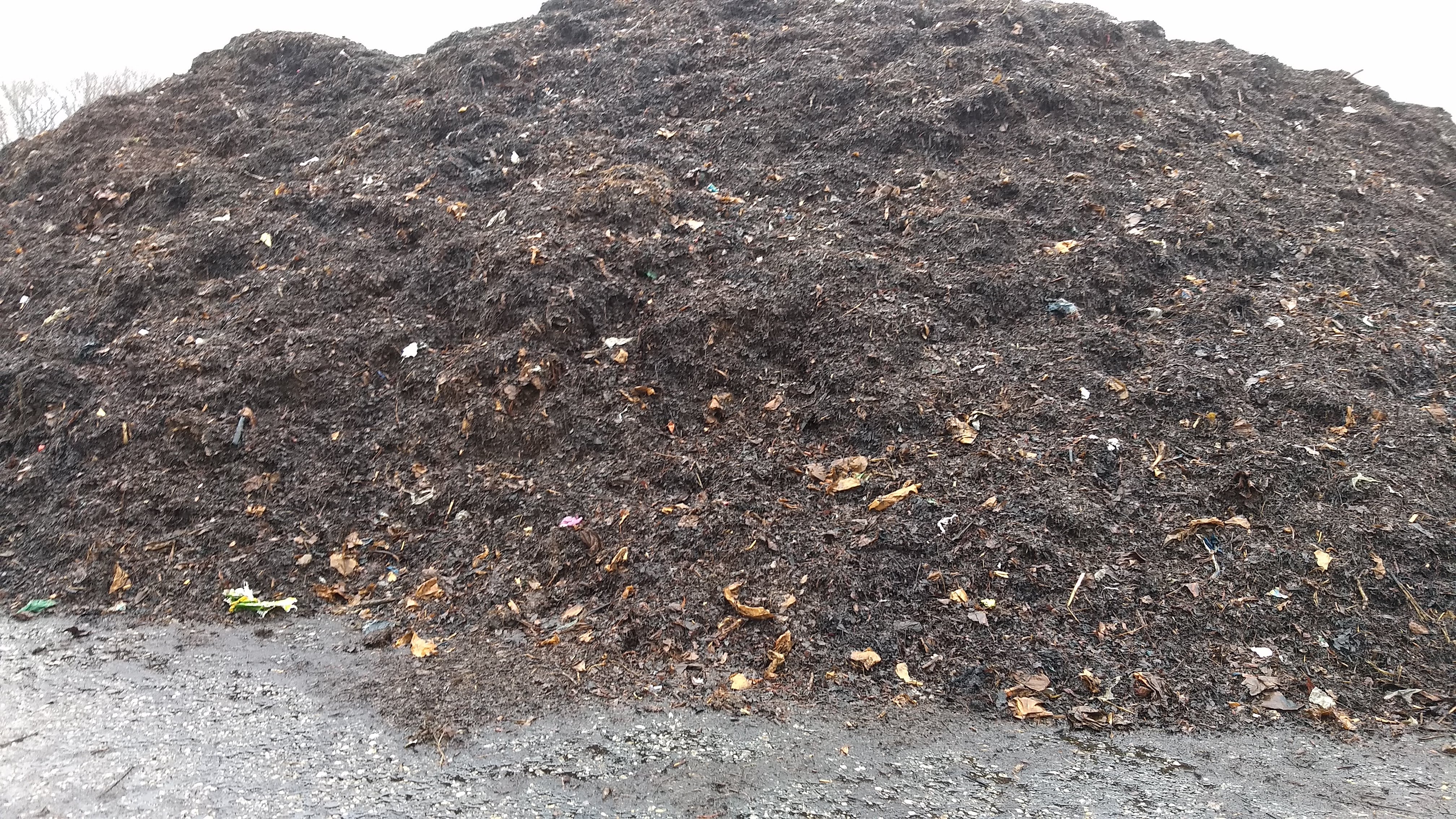
A critical piece missing in Maryland’s effort to divert food waste from landfills and incinerators is the capacity to compost food scraps. Meanwhile, Maryland farms use compost in their operations, and the ability to have a routine source of compost while earning income for accepting food scraps is a positive. Many farms across the state are using the current small compost permit exemption, even within the constraining 5,000 square foot limit, to take food scraps from nearby producers and incorporate it into their compost, creating better mixes of compost. The ability to add food scraps to on-farm generated materials allows farmers and composters to create a higher quality product.
High quality compost needs a mix of materials, the “green” and the “brown.” Greens are moist things like coffee grounds, vegetable scraps, and animal manure, while browns are dry materials like leaves, corn stalks, and paper. Greens tend to be rich in nitrogen and protein and help heat up the pile, while browns are carbon rich and provide the bulk in the pile to allow air to filter through. A proper balance of these materials helps produce high quality compost, but relying on on-farm generation of materials does not often produce the right mix.
Compost is also a valuable mechanism for waste diversion. According to the US EPA and USDA, food scraps are 54.1% of compostable material, and they represent 21.6% of the total waste generated. In Maryland, around 927,000 tons of food waste are generated each year, but only 15.5% is recycled through composting or other means. By comparison, paper and yard trimmings, which are also organic waste, are recycled at 39% and 94% respectively.
Expanding access to composting also benefits the environment. Decomposition in landfills produces significant levels of methane. Composting food waste is preferable to disposing of it in landfills, because it does not produce methane and carbon dioxide at these levels. This is because of the difference between anaerobic decomposition and aerobic decomposition. Landfills establish anaerobic decomposition, in which no oxygen is present during the decomposition of municipal waste. This process produces very high levels of methane. The EPA cites these municipal landfills as the third-largest source of human-related methane emissions in the US.
By contrast, compost uses aerobic decomposition. In this process, oxygen is present during decomposition. When oxygen is present, the microbes that produce methane are not active. As a result, aerobic decomposition, and thereby composting, does not produce methane at the rate that anaerobic decomposition does.
In fact, composting actively reduces greenhouse gas in the atmosphere. This is because composting promotes carbon sequestration in the soil. Microbes only present when there is oxygen take up carbon dioxide while converting organic matter into compost, removing it from the atmosphere and storing it in the soil. Composting as a waste diversion tactic therefore not only prevents methane emissions caused by landfills, but also promotes the reduction of greenhouse gases.
Composting on farms has been a haven supporting new and growing compost companies within the state of Maryland. Expanding the ability of farmers to compost on their land and create an important soil supplement is a great opportunity to address the issues of food waste, soil health, and carbon sequestration.


